FiiO’s flagship in-ear monitor is a masterclass in tuning and heralds its grand entry into the highly competitive midrange tier of earphones.
I’ve seen the look in their eyes. Fearless, hungry, full of fire, staring directly at the sun and challenging all comers. Those in the shade can only admire the ferocity, audacity and borderline insanity. Like a raging bull charging to the fore, FiiO are marching towards immortality, bent on world conqueration, celebration and inebriation (in that order). Sorta like the movie 300, only on Xerxes’ winning side.
FiiO have come a long way since dipping their toes in the vast pool of in-ear monitors (IEMs) via the EX1 a few years ago, essentially a repackaged Dunu Titan 1. Since going out on their own and starting their own band, they have launched three IEM lines; the F series for dynamic drivers (DD), FA for balanced armatures (BAs), and FH for hybrids. Today we look at what is FiiO’s priciest and most ambitious IEM, the FH5.
- Stellar, musical tuning
- Natural and coherent signature
- Good accessory set and tip selection
- Sterling build quality
- Divine comfort
- Quality stock cable
- Intimate soundstage
- Congestion in complicated tracks
- Balanced cable is a separate purchase
- Short nozzles and fidgety fit
- Below average isolation
Moar Drivers!
Fresh off learning the ropes with their first hybrid, the FH1, where else to go but stuffing the IEMs with more and more drivers, before the inevitable purist approach by reducing the driver count? Before we get ahead of ourselves, the FH5 houses a total of 4 drivers, with 3 Knowles BAs handling the mids and treble; while a single 10mm polymer nanocomposite DD delivers the bass.
The FH5 proves to be a powerhouse of patented technology as well, with solid Trishell housing, S.Turbo sound tube design for visceral bass delivery, and three independent sound bores for bass, mids, and treble. These drool-worthy new tech come together to evoke a sensational, sensory experience for the FH5, from sight to touch to hearing. We haven’t gone into IEM smell or taste yet, but who knows what the future might hold?
I would like to thank Lily of FiiO for the review sample, and her continued support for my reviews. The FH5 currently retails for USD269.99 and is available through their official website and Amazon.
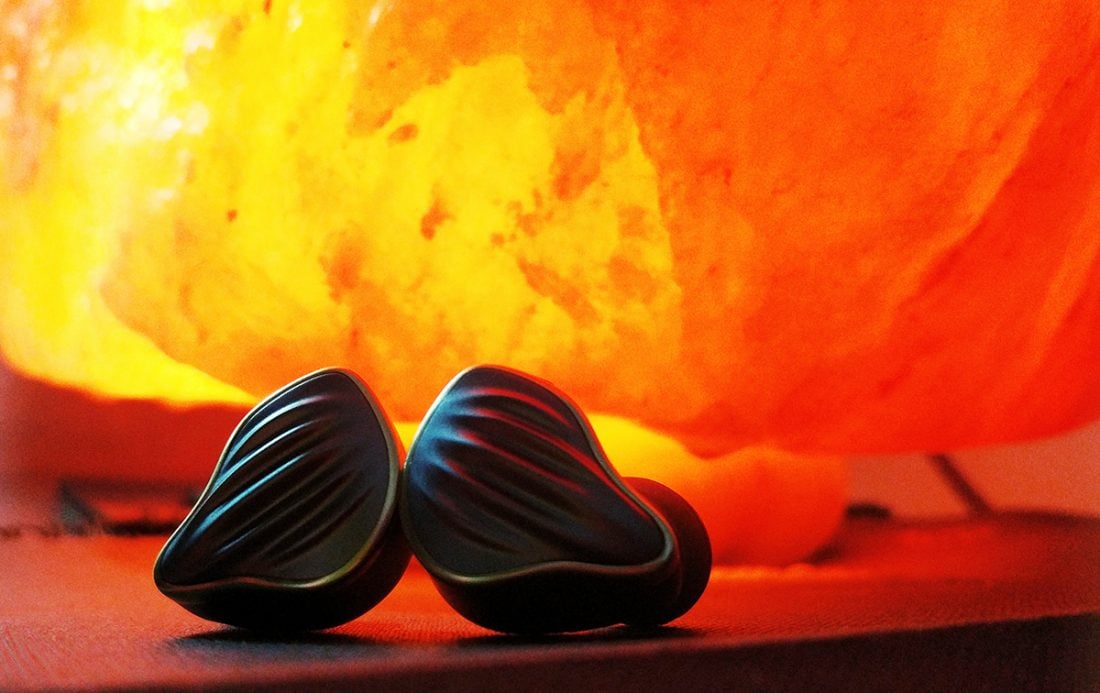
Equipment Used:
DAP
IEMs
- FiiO FH5
- FiiO FH1
- iBasso IT03
Albums Listened
- Aaron Neville – Warm Your Heart
- Art Pepper – Modern Jazz Classics
- Daft Punk – Random Access Memories
- Diana Krall – From This Moment On
- Fleetwood Mac – Rumours
- Fleetwood Mac – Tango in the Night
- Macy Gray – Stripped
- Meiko – Playing Favorites
- Michael Jackson – The Essential
- The New Appalachians – From The Mountaintop
Packaging and Accessories
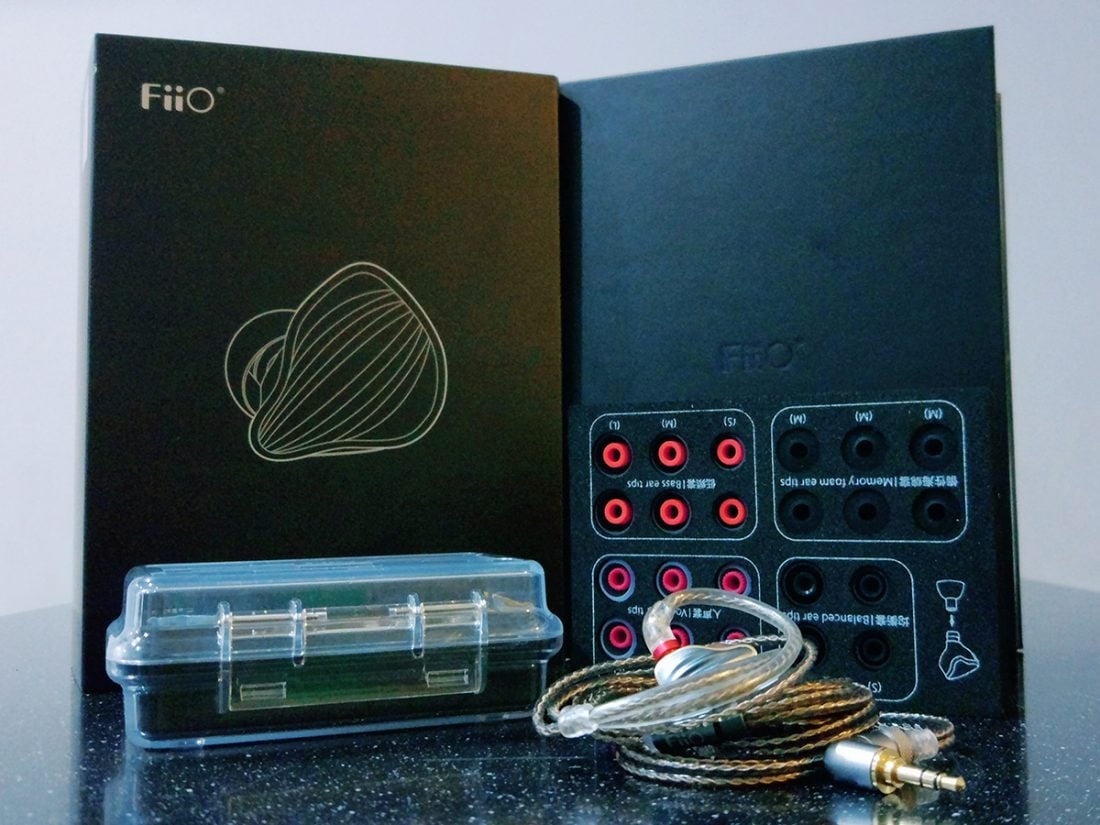
One of my favourite movie phrases come from Kingsman, a Colin Firth starrer about gentlemanly conduct, where he says (in between bashing bad guys really hard), “manners maketh man”. So, well, packaging maketh earphones. How you present yourself to someone new can mean the difference between a future lifelong partnership or being shown the door.
Since IEMs can’t really say “pardon me, miss”, a presentable appearance is the next best approximate. FiiO’s previous release FH1 had rudimentary packaging befitting an entry-level product, but here we see a huge step up. FH5’s packaging positively glows and demands attention. Not just a big box, like many life lessons we’ve learnt, it’s what inside that counts.
Stuff and Ear-Stuffers
As you open the book-like casing, the FH5 stares back at you, a specimen of beauty and splendour, adorned with gold trim and matching cables. Nothing says “touch me” more than this. But easy tiger, we have more to uncover. Underneath, a host of eartips with different sound properties await, for vocal lovers, bass addicts, balanced nuts, and um, some foam tips for treble-haters perhaps.
As with the FH1, a lovely Pelican-like case is provided, only now in transparent as opposed to the glossy black of old. Something tells me FiiO couldn’t wait to show off the FH5 at every opportunity. I have already extolled my love for the case in the FH1 review, but let me repeat it in simplified form. I love it, adore it, and would trade less-familiar family members for it given half a chance.
As I start a third consecutive paragraph with the same word, rounding out the accessory set is a fabric zippered pouch and a cleaner tool. The pouch is more pocketable than the hard case but sans protection, I wouldn’t use it but then again that’s why we have options. The cleaner tool is for, well, ear gunk in the sound bores. Do keep your ears clean.
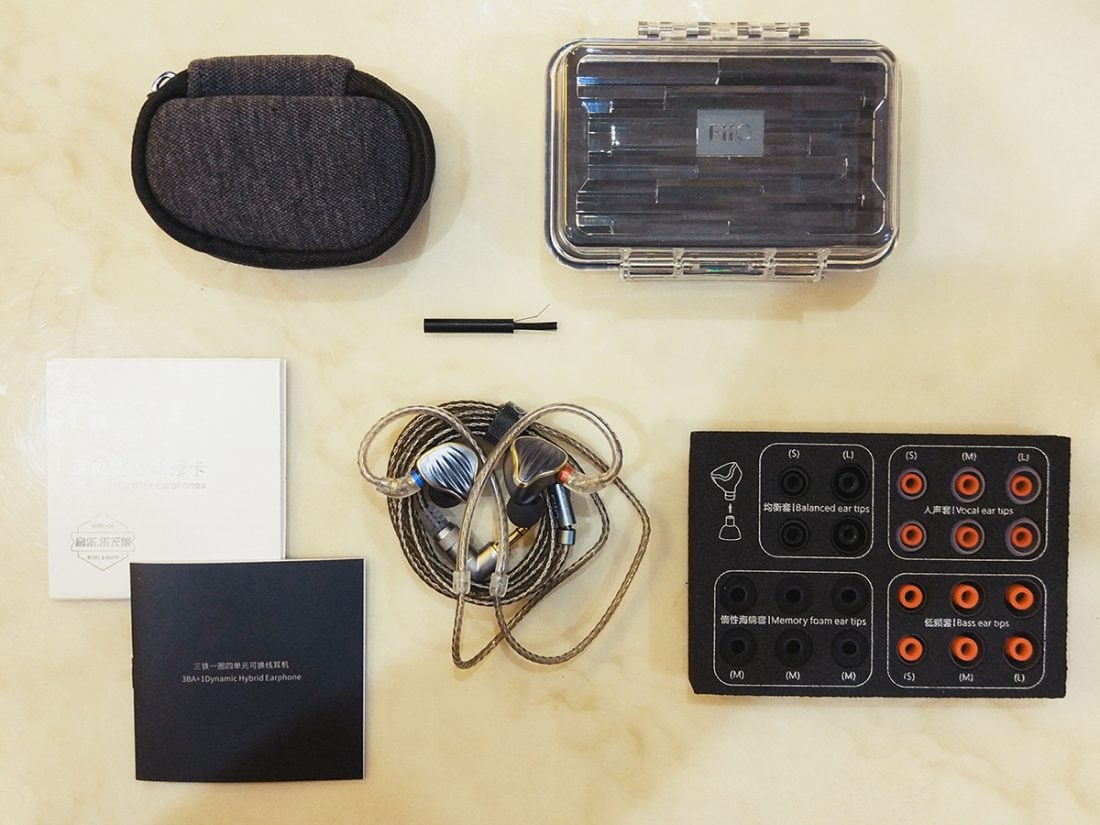
Design and Build Quality
My, my. The FH5 looks marvelous. Even when compared to its predecessors, the FH5 stands out like a supermodel in a sea of girls-next-door. Inspired by fluid supercar designs, it has a sleek and aerodynamic shell, highlighted with grooves on the faceplate that look like either tiger claw scratches, or ruffled bed sheets.
For now, the FH5 is only available in titanium with gold trim, with probably more colour choices soon based on customer feedback. Titanium, okay, grey might not be everyone’s cup o’ tea, but the gold trim adds finesse to its looks, subtly telling you it has hidden depths. Taken as a whole, I love the design. It’s meant to trigger an emotional response, like “buy me now”. Is that an emotion? Ah yes. Lust.
Just… Lust
The lust amplifies when you hold the FH5 in your hands. Made of CNC machined aluminium-magnesium alloy, FiiO’s patented Trishell design feels smooth and fluid to the touch, yet solid and sturdy. The term velvety metal does not make much sense, but I’m calling it exactly that. It’s sexy metal built to excite.
Speaking of build quality, the smooth finish and the machined edges inspire confidence. For now, the MMCX connectors cause no issues such as sound cuts or loose fits, and I hope they stay that way. Attaching cables to the FH5 let out a satisfying click, and the cables do not spin as freely in the socket as other MMCX connectors. Whether it will survive the apocalypse I cannot say, but if you threw these at someone I bet it will hurt.
Cables
A lot of thought (and copper) was put into the FH5’s stock cable. The result is a beautifully-braided and sheathed cable made of high-purity monocrystalline silver-plated copper. The build quality far surpasses any expectations of a stock cable, outdoing the previous FH1’s braided cables easily.
Like a photographer fawning over his favourite muse, the attention to detail is stunning. From the transparent connectors coded red and blue for easy differentiation, to the solidly-built 3.5mm jack, aesthetics play a big part in the cable’s allure. The cables behave fairly well too, with some memory retention but not so much as to irritate the user. My only complaints are the ear guides bend too much, and you do feel the weight of the cables. Otherwise it’s a winner chicken dinner.
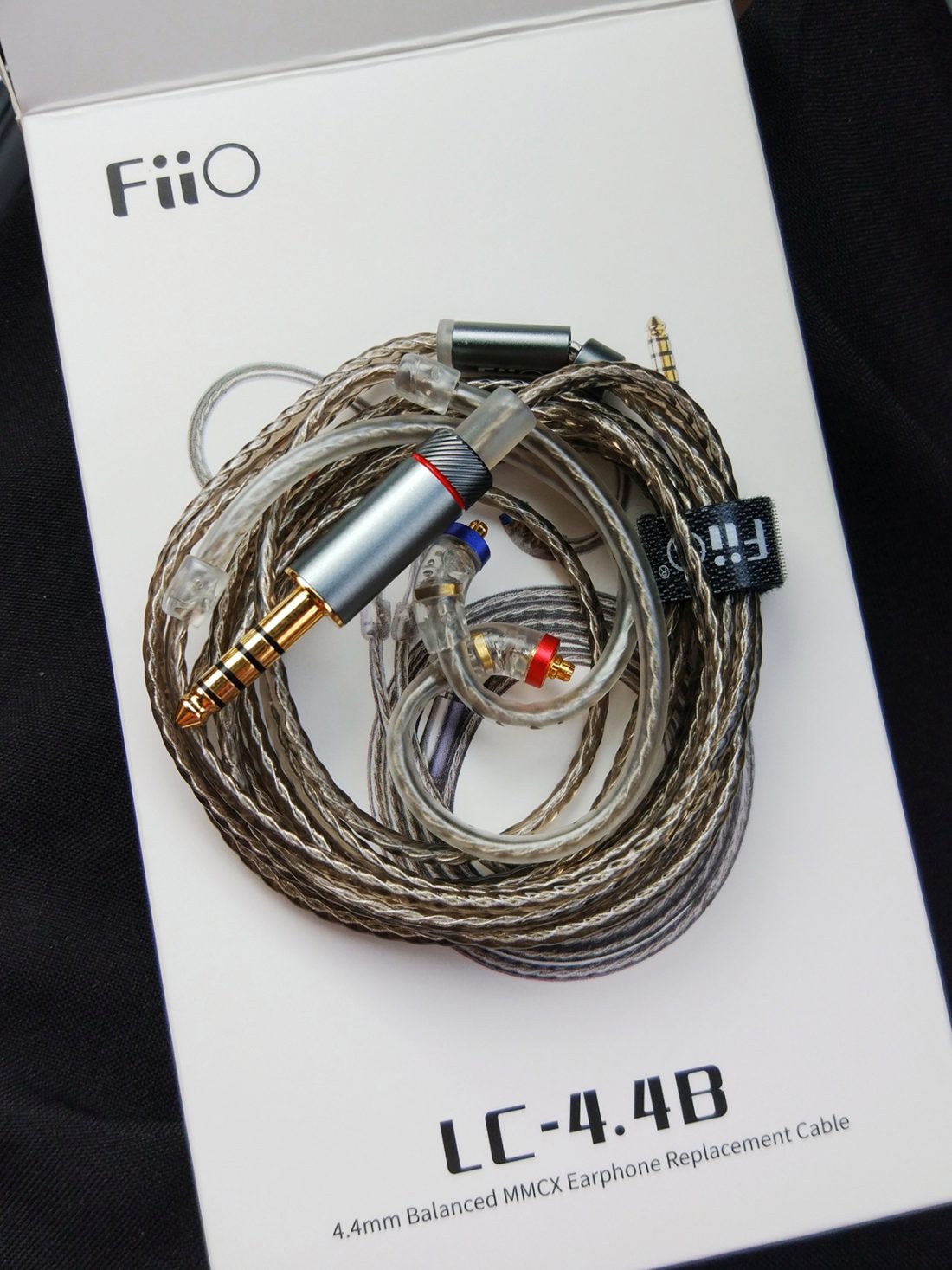
Balance to the Fore
Lily was kind enough to provide the LC-4.4B balanced cable for my Sony audio player. The cable is the exactly the same as stock, but with a 4.4mm 5-pole jack instead. The sound improvement going from single-ended to balanced playback in a Sony is obvious, with more apparent details, a blacker background, cleaner stage and better dynamics. Improvements vary for other players, but for Sony we go balanced every chance we get.
FiiO did not include a balanced cable in its packaging this time around, making them (also available in 2.5mm TRRS) a separate purchase. Some will balk at this decision, but at USD36.99 for this silver-plated copper cable, it’s one of the cheapest in the market for spectacular quality. To soften the blow, FiiO included a balanced cable free of charge for early birds, so they got your back, albeit temporarily.
Fit, Isolation, and Comfort
Like a silk robe, an oversized tee or mid-2000s Jessica Alba, some IEMs when you first look at them, you just know they’ll fit you comfortably. The FH5 has this charming quality where you just want to put them in you at first sight. That sounded wrong. In more polite terms, the smooth, ergonomic finish ensures seamless and pain-free insertion, removal, and re-insertion for years on end. Ahhh damn.
The amorphous shape of the FH5 adheres nicely to my ear contours, and my ears thank them for the supreme comfort. Isolation is below average as I hear a lot of outside noise coming in, so these are not reliable for your daily commute. Where the FH5 falters is the short length of the nozzles. preventing a strong enough seal to stay in your ears. Finding the right set of eartips to solve this conundrum can prove exhausting.
The Quest for Tips
I tried all the stock tips (not those stock tips, otherwise I’d be owning companies instead of writing reviews lol), and none gave the seal that I craved, much less the amazing sound I know the FH5 is capable of. Switching to JVC Spiral Dots made things worse, as the FH5 started falling off my ears. Spinfits fit wonderfully, but sound quality took a dive as the soundstage became congested.
Finally, the perfect match for me came via Symbio eartips by MandarinEs, a foam-filled silicon that anchored the FH5 well. As for sound, detail levels remain high as treble is not sucked out, while the soundstage is relaxed and wonderfully spaced out. This is it. I can’t help but think the problem could be avoided if the FH5 had longer nozzles for a more secure fit.
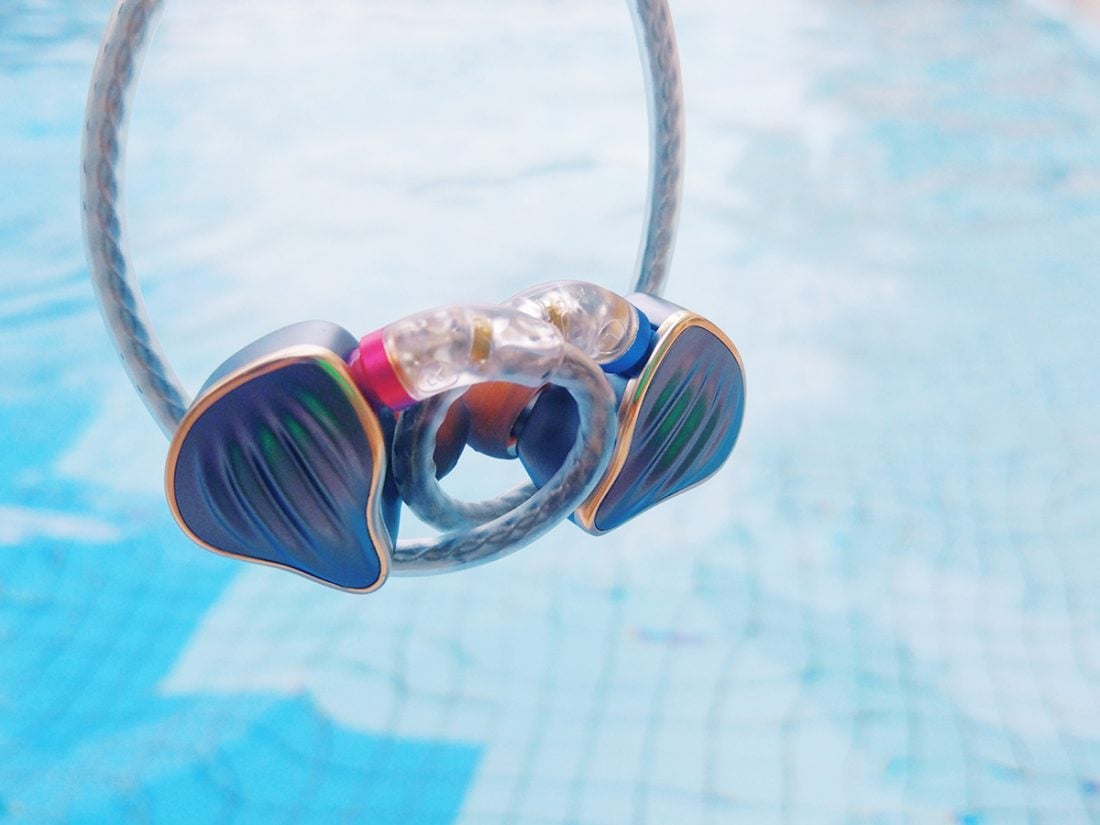
Sound Quality
In the interest of conformity and sheepism, critical listening was done after 100 hours of burning in. I like to give all IEMs with DDs a thorough workout, whether they need it or not. After 100 hours, generally the notes seemed to have tightened up with more focus, but this could be just a placebo, since I’d really like something in return for those 100 hours, y’know? The main setup used was Sony WM1A “K” Modded (low gain and Direct Source on) > LC-4.4B cable > FH5.
Overall Sound Signature
The FH5 follows a balanced signature overall. I hesitate to call it neutral, as it conjures images of stiff upper lip audiophiles listening critically to a flat, boring tuning and jotting down notes fervently.
Lest we forget, FiiO’s grammatically unquestionable motto is, “Born for music and happy”.
This spirit encapsulates the FiiO experience, you’re here to let your hair down and get down to the music. And the happy.
The FH5 has a people-friendly tuning. Like the peacemaker of IEMs, it goes out of its way not to offend anyone with its sound signature. In many ways it resembles the preferred Chinese tuning which goes something like “strong bass that does not overpower, sweet mids with emphasis on vocals, and a smooth yet detailed treble”. Don’t ask me where I got that quote from. So the FH5 is really a mild W-shaped signature.
The Blueprint
And that is the blueprint with which FH5 follows successfully. The bass, mids and treble operate in tandem to provide the absolute optimally-tuned signature possible. The whole is greater than the sum of its parts. Individually, I can nitpick here and there, but together, it’s hard to fault the signature at all. It’s natural, euphonic, coherent, and easy to listen to, like sitting in your favourite recliner with a hot mama. I mean cuppa.
Bass
In the beginning, there was nothing. And then, there was coffee. Black, concentrated, strong and bitter, and not for general consumption as people had palpitations and throbbing headaches. Weaklings, sheesh. So in the interest of getting more people to accept the idea of coffee, we add milk and sugar, introduce changes to its taste and texture.
Milky Latte Bass
The FH5’s bass is as mainstream-focused as they come. The bass is gently lifted to provide some body and warmth to the lower end, but never too much to encroach into the mids, sort of like a milky latte. The subbass extends low and surprises with flights of viscerality and rumble when I least expected… it’s good quality!
The midbass is cleaner and leaner, with well-rounded, organic notes and a quick decay. While I wish for more bite and a few db more of it (closet basshead alert), it’s well-balanced on the whole. You will not accuse the midbass of lacking texture or speed, and it just has enough body for some punch and impact. Bass is not the star of the show but plays a big part in the signature. A team player, big-picture bass if you will.

Mids
The FH5 mids would likely bask in the limelight and adulation of centre stage. They can be summed up in one word oft-used by Gordon Ramsay: stunning. They are forwardly-placed, and the highlights easily heard. Not only are the mids strikingly detailed and intricately textured, instruments have a natural euphony aided by a touch of warmth and note body.
Like Eddie Current
The mids are so well-balanced, almost as if, when faced with a barrage of tuning choices, they manage to take the middle road at every turn. Smooth or detailed? Both. Thick or airy? Both again, please. Round or textured? Natural or clear? Warm or bright? All of the above. It’s an ingenious balancing act accomplished by one of the best mids in this price tier.
It is worth noting that FH5 was probably crafted especially for female vocals. They are emotive and rich, yet articulate and clear, from a haunting whisper to the vibrato of a soprano, rendered commandingly and confidently, and easily worth the price of admission. Male vocals are a touch behind (don’t touch their behinds!), as the flatter midbass to lower mids obligates a drier, throatier male voice. Ah well, can’t have it all.
Treble
Treble treble, toil and trouble, fire burn and cauldron bubble… crafting the perfect treble is a painstaking process. As everyone’s treble tolerance varies, what constitutes a great sounding treble to one might be ear-piercing ice picks for another. One man’s meat is another man’s sleep tonic.
Not the Lord of Sparkles
Continuing from the clear and balanced mids, the treble takes on an intricate duality of smoothness and excitement as well. It’s a steady rise to the top, with a tastefully elevated lower treble for a bit of zing. The Lord of Sparkles is merciful on this one, as the intensity peaks just before mid-treble and gently rolls off before hitting the sibilance zone.
As a result, cymbals and hi-hats sound irresistibly crispy and tight, while the nick-of-time treble peak provides just enough air to breathe around the whole spectrum. The treble is energy and forgiveness in equal measure, another people-pleasing part of the signature, and one where I can’t find fault with other than the last bit of extension at the very top.
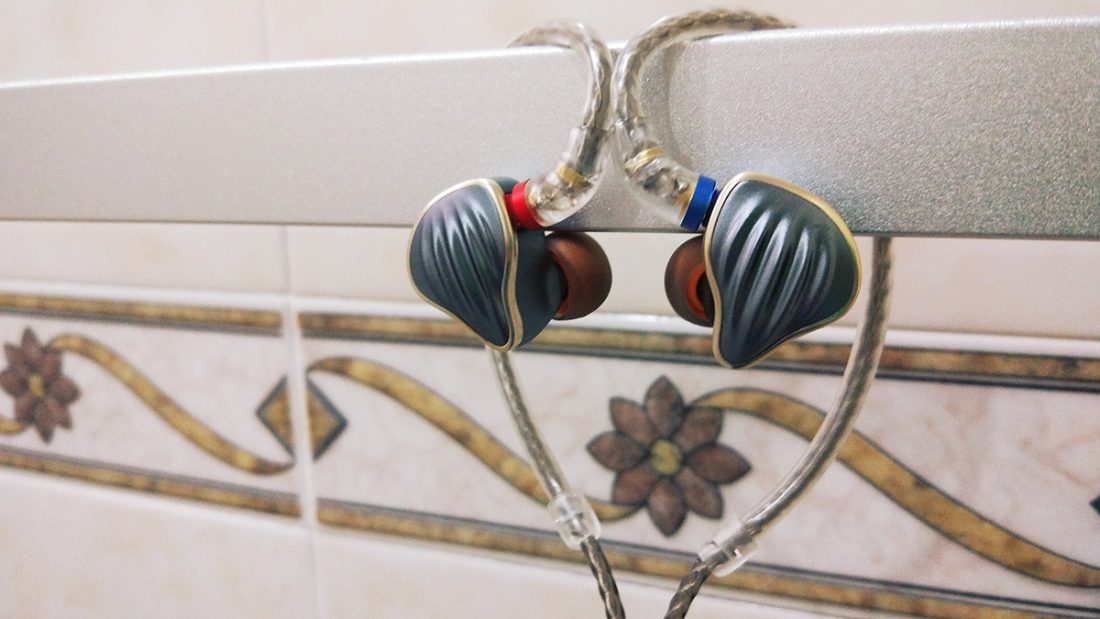
Soundstage and Imaging
The unflappable tuning gives way to the flappable soundstage. The stage presentation is more intimate than vast, more up-close than detached. Getting taken over by the music is one of the FH5’s selling points, so as expected, the stage dimensions are pretty modest. Soundstage width is better than its depth, while height is a pleasant surprise, but the sound doesn’t really leave the orbit around your head.
Drone Practice
The good news is that imaging fares better. Aided by the quick and detailed notes, swift decay and abundant air, the stage is neat and tidy, which always leads to great imaging. Sure enough, positional cues are readily defined on all axes, even holographic in some instances. Up to a point, however, as the small soundstage means ultimately if a track is too complicated the stage gets congested.
Remember when a blindfolded Luke Skywalker deflected blaster shots from a drone with his lightsaber? The FH5 achieves much of that precision, but don’t bet your life on it. If just two more trigger-happy drones find their way to Luke, that’s it. So while the soundstage is the weak link of the FH5, the impeccable tuning more than makes up for it.
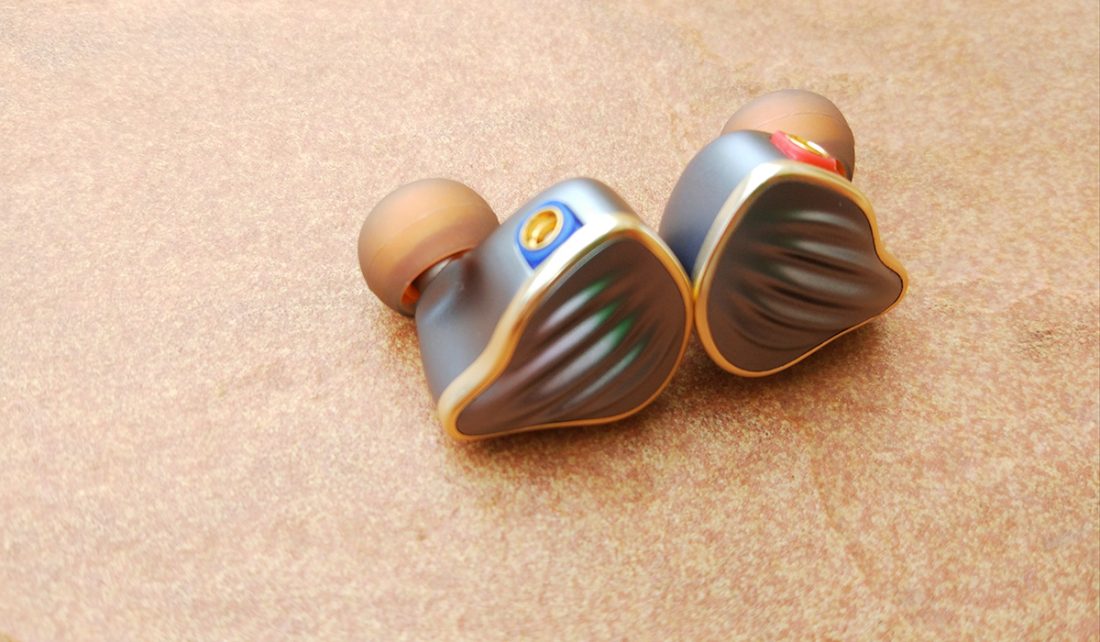
Comparisons
FiiO FH1
The FH1 was FiiO’s first foray into hybrid IEMs. Based on price alone, the FH5 is already the winner. Moving on… hang on you want more? If I were to use a word to describe the FH1 sound it’s lush. For FH5 it’s euphonic. I was about to say sprightly but apparently, that word is reserved for the elderly.
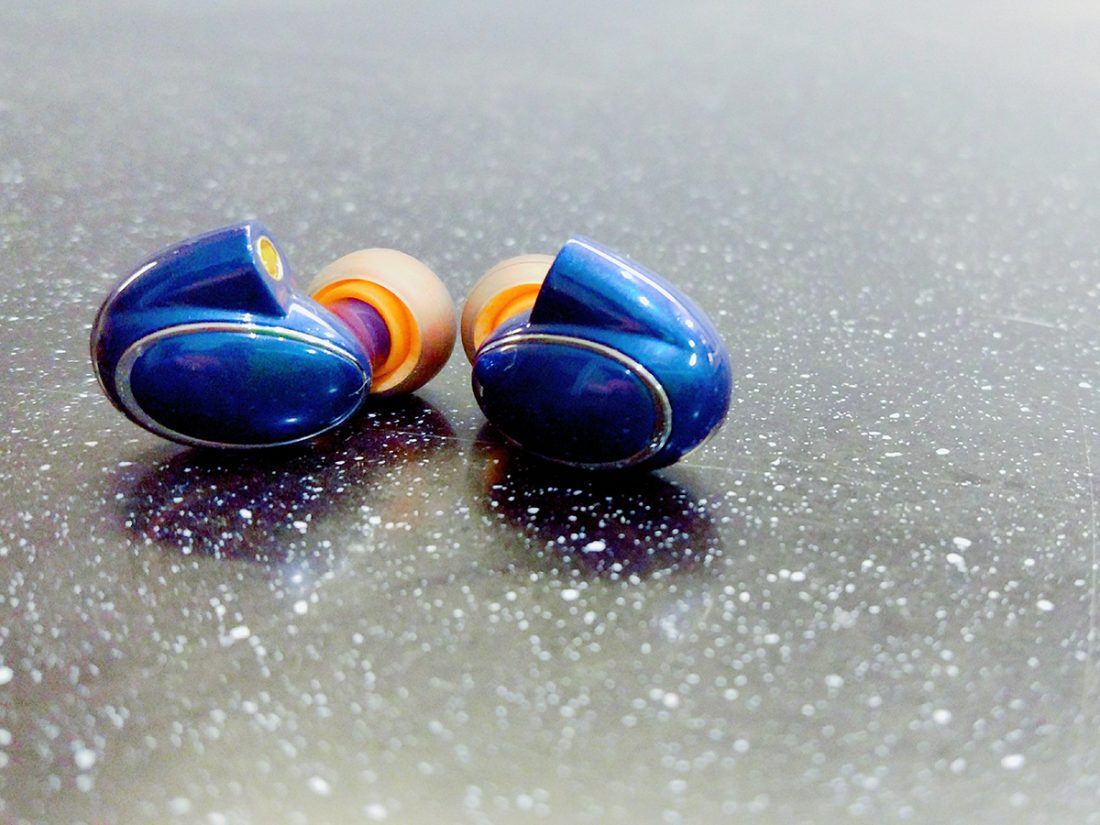
Lacks Discipline
The FH1 has a boomier, looser bass. It’s well-rounded but lacks texture and refinement of the FH5. The FH5 with its subbass emphasis sounds clean and disciplined, yet with fun factor cheerfully intact. Mids are the highlight for both monitors, with FH1 sounding thicker and smoother, and FH5 sounding more linear, airy and detailed. FH1 edges out FH5 in male vocals, but for everything else, FH5 takes the throne.
The FH5 treble makes FH1 sound subdued and not trying hard enough. Both are free of harshness, but FH5 gets some excitement out of the signature while FH1 stays home. For soundstage presentation, even with both veering on the intimate, FH5 has a larger playground while FH1 is nearly in-your-head. Imaging and separation are better layered, airier and more precise on the FH5.
Needs Gym Time
All in all, FH1 is the easygoing chap while FH5 goes to the gym three times a week. Their signatures might be different, but objectively, FH5 carries more detail, has better note texture and tightness, is more extended both ends, and does well with most genres. It’s also more than three times the price, so only you can judge from a value standpoint.
iBasso IT03
Fresh off pounding the FH1 into submission, a wild IT03 calls to FH5, “why don’t you pick on someone your own size?” iBasso’s IT03 is a darling of the sub-USD300 range, where many good hybrids reside. For FH5 to enter this exclusive club, he knows this fight is unavoidable. Ding ding!
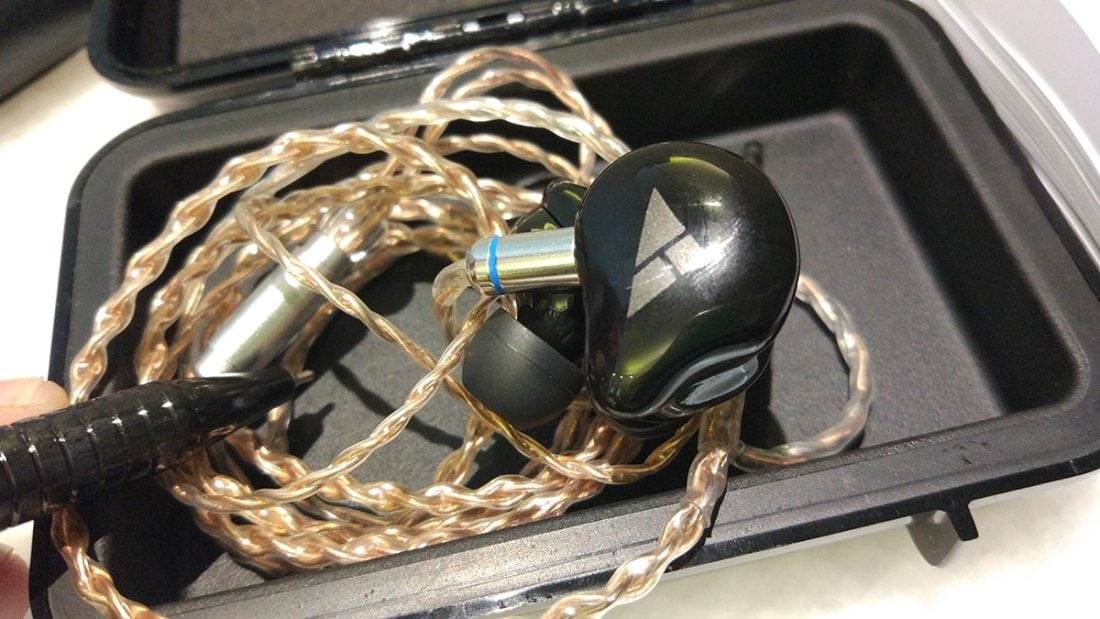
Bring the Boom Boom
As they size up one another, it’s obvious IT03’s signature follows many hybrids, the classic V-shape. The bass is meaty and fleshy, with more emphasis on midbass and a superb natural bloom. It’s a bass very hard to resist. FH5 has more subbass presence but is otherwise flatter, the midbass scoop robs it of some body but in return the FH5 has a more detailed and textured bass.
For mids though, the FH5 starts pounding away. Air? Euphony? Natural timbre? Note richness and an altogether engrossing experience? Check and check. The IT03 cowers behind, with thinner note size and noticeable recession compared to the bass. IT03 takes bass, but mids is all FH5.
It’s Sparkle Time!
They go neck and neck and blow for blow in treble. IT03 is exciting, clear and sparkly, but flirts with sibilance thanks to a mid-treble peak. FH5 stays on the safe side, with a bit less energy, but notes hit cleaner and smoother. IT03’s time to shine (and sparkle) comes via its impressive stage size, which dwarfs the FH5 in all dimensions with ample amounts of air and dynamism. The FH5 is more condensed but has more precise imagery.
As the battle grinds to a halt, there is no clear winner. FH5 is the obvious favourite for midheads and a more level, linear signature, but IT03 is one of the stalwarts of a well-executed V-shape, with an uber-fun bass, thrilling treble, and a large soundstage. FH5 is more for the ears while IT03 is for the feet (and the bopping head).

Final Words
Reviewing the FH5, I was reminded of an Aesop fable. As a father struggles to stifle his children from continually fighting and arguing, he brought out a tree branch for each of his offspring and instructed them to break the stick in two. It was of course an easy task. The father then tied a bundle of sticks together and asked them to break the bundle, which proved impossible. Lesson being, there is strength in unity.
The greatest strength of the FH5 lies in its united tuning. Taken together the signature simply sings, and you forgive any shortcoming it might have. I’ve thrown rock (not rocks), jazz, soul, EDM, pop and folk at it, and FH5 handles them magnificently as a coherent juggernaut. There are weaknesses, for example upper bass wouldn’t last 5 seconds in a fistfight, but the musical experience that FH5 provides easily compensates for them.
At this price level, inevitably you start harbouring expectations, almost like returns to an investment. The FH5 has enough charm to win me, and possibly many others, over. It stands toe to toe with any and all hybrids in its price range, and in my opinion is among the best-tuned. The evergreens like DN-2000J, FLC8S and LZ-A4 better take notice, this division just got spicier.
Based on its strengths, the FH5 is almost a statement product from FiiO just to show how far they’ve come. This is, if I’ve not made myself clear earlier, FiiO’s greatest IEM. And what’s more chilling is, this is merely the beginning. It’s only their second hybrid IEM, and we’ve not yet heard from their BA line yet. FiiO IEMs have always been value-for-money propositions, and as they climb up the food chain, I await with bated (and smelly) breath their next release. But for now, you already have the FH5 for maximum enjoyment.
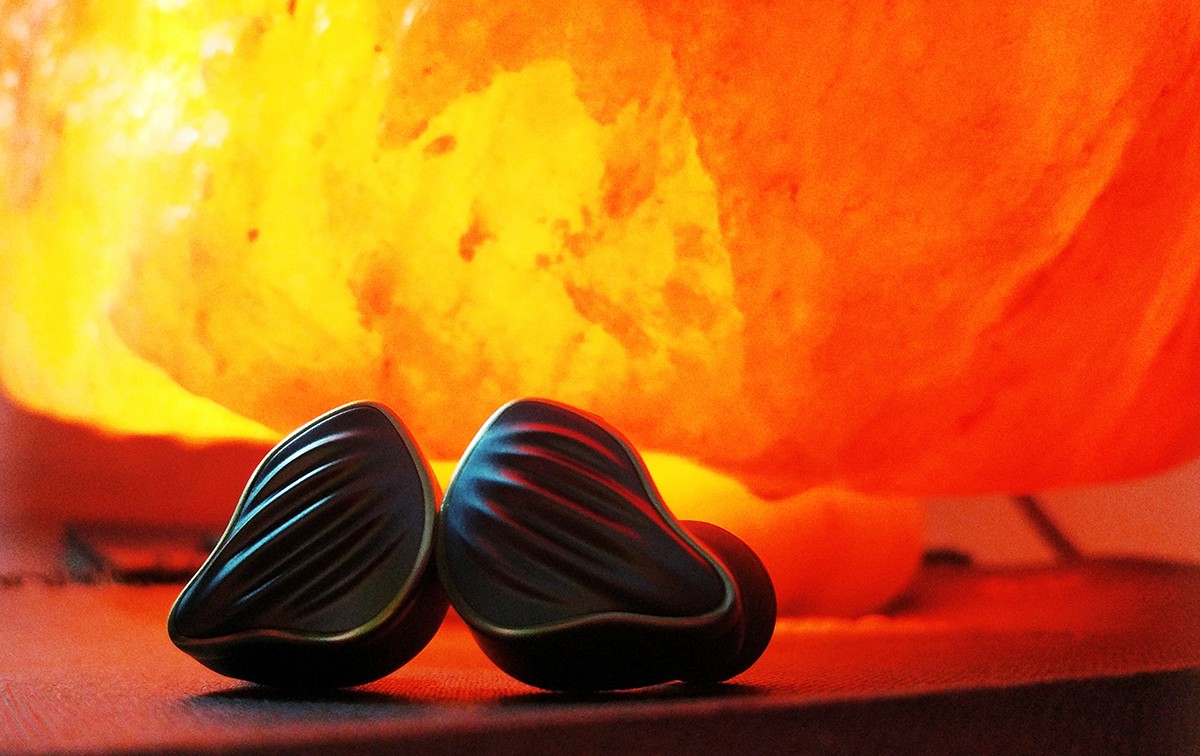

Great review. Do have a question for you though.
You mention that the DUNU DN-2000j should watch out against the FH5. What’s your take on these two?
I’ve got a 2000j, and have been thinking of upgrading to something else, and along comes this FH5 and everyone is giving it glowing reviews, but now here you make a statement that makes it seem like it’s roughly in the same ballpark, in other words, a side-grade. Is that the case?
And if they are a side-grade, what would you consider a good upgrade?
Thanks!
DN2KJ is more technical and clinical, being inspired by AKG’s 3003. To me it’s a love it or hate it signature, and sadly I belong in the latter group. In my few sessions with them, its strident treble draws my attention away from everything else about the sound. 2KJ handles detail levels, soundstage size and airiness better than FH5, and has a lightning quick bass that’s addictive. FH5 is more musical and intimate, technically proficient but not surpassing 2KJ’s, that’s why I thought they are sidegrades.
As for upgrades, this is where it gets difficult. Not much attention is given to upper midrange IEMs in the $500 range. From what I’ve heard, Acoustune HS-1650CU is just as musical with better separation and coherency; IMR R1 has better bass, treble and soundstage size but not as good mids as FH5, A&K T8iE MKII has better details and dynamics, but a smallish headstage, while Oriolus MK2 has a similar W-shaped signature with a large soundstage and what I consider a direct upgrade.
I’m also aware that they all cost significantly more than FH5, but these are all I’ve heard. Sorry about that.